6- Mastering Fashion Technology and Digital Tools
In this section, you will learn about the essential digital tools and technologies that are transforming the world of fashion design. We’ll start by exploring the basics of fashion design software like Adobe Illustrator and Photoshop, which are key programs used by designers to create digital sketches and visual designs. CLO 3D, a popular 3D design software, will also be covered, showing you how it allows designers to visualize their garments in a more realistic way before physical production even begins.
Next, we’ll dive into digital pattern making and CAD software, which have become invaluable for creating precise and efficient designs. These tools help designers save time and reduce errors by allowing them to create digital patterns and make real-time adjustments. We’ll also look at how emerging technologies like AI, 3D printing, and virtual fashion are revolutionizing the industry, offering designers new ways to create and innovate. Finally, we’ll discuss how social media platforms can be used as a powerful tool for inspiration, networking, and promoting your designs to a global audience.
Introduction to Fashion Design Software (Adobe Illustrator, Photoshop, CLO 3D)
It is important to get familiar with fashion design software if you want to turn your ideas into real visuals. These tools help you sketch, design, and edit your work in a clean and professional way. Most fashion brands use digital tools in their design process, so learning them early gives you a major advantage.
Let’s look at a few of the most popular ones used in the industry.
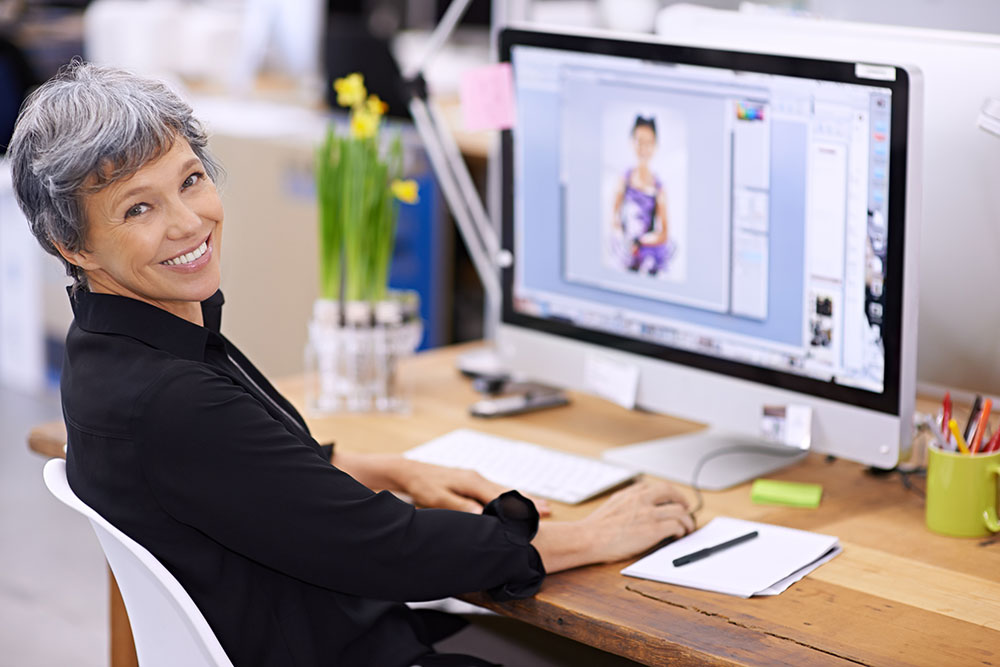
Adobe Illustrator
Adobe Illustrator is one of the most-used programs for creating digital fashion sketches and technical flats. You can easily draw clean lines, add color swatches, and build mood boards all in one place. It’s especially helpful for making spec sheets and garment designs that manufacturers understand. Many London-based designers and fashion students use Illustrator as their go-to tool.
Photoshop
Photoshop is super useful for editing images, creating textures, and visualizing fabric on your designs. It lets you play around with colors, prints, and layers to bring your fashion ideas to life. It’s also great for building professional-looking portfolios or social media content. If you’re creating lookbooks or campaigns, this tool is a total game-changer.
CLO 3D
CLO 3D is an exciting tool that lets you design and simulate garments in 3D. You can see how clothes will fit and move before you even sew a single stitch. This is super helpful for testing out ideas and saving time and fabric. Fashion schools and studios in London are starting to use CLO 3D more and more, especially for sustainable design work.
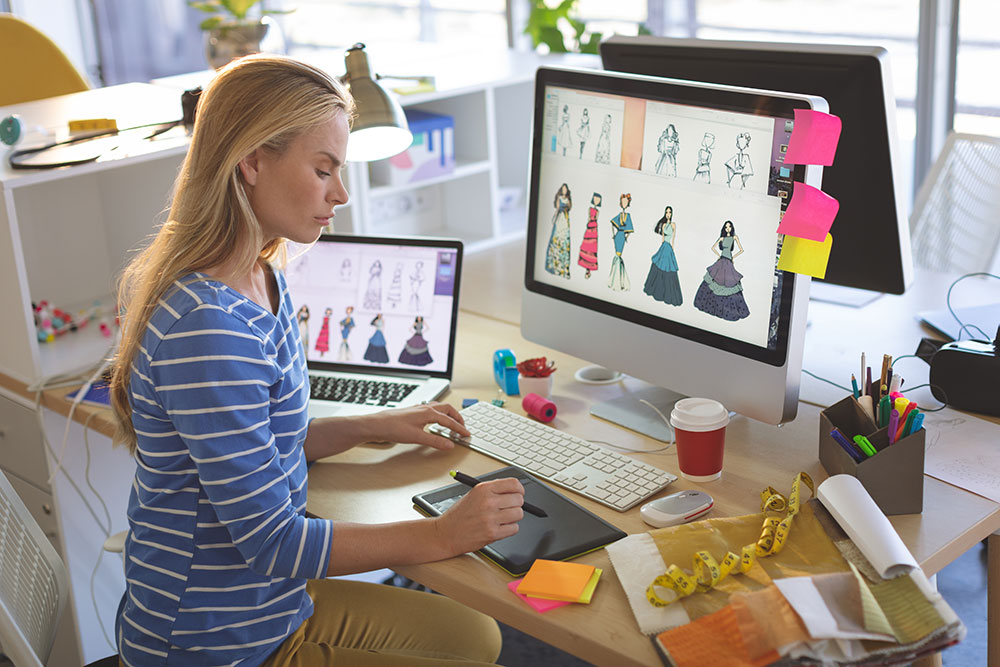
Digital Pattern Making and CAD Software
Digital pattern making lets you create and adjust patterns on your computer instead of drawing them by hand. It saves a lot of time and makes it easier to fix mistakes or experiment with different cuts and shapes. You can use software like TUKAcad or Gerber AccuMark to build patterns that are super accurate and ready for production. This technology also helps you keep everything organized, from your pattern library to size grading. If you’re new to this, there are plenty of tutorials online to guide you through the basics.
CAD (Computer-Aided Design) software has become a must-have tool for modern designers. It’s not just for sketching but many programs let you visualize how your patterns will fit together in 2D and 3D. CLO 3D, for example, is popular for its realistic garment simulations and user-friendly interface. Using CAD can also make it easier to communicate with manufacturers by sending digital files instead of physical samples. It’s a smart skill to pick up early if you want to work efficiently and keep up with how the industry is evolving.
How Technology is Changing Fashion Design
It is crazy how fast technology is transforming the fashion world right now. From smart design tools to virtual runways, the industry is evolving way beyond just fabric and sewing. Technology isn’t replacing creativity but it’s giving designers more freedom to experiment and push boundaries.
Here are a few ways it’s making a major impact
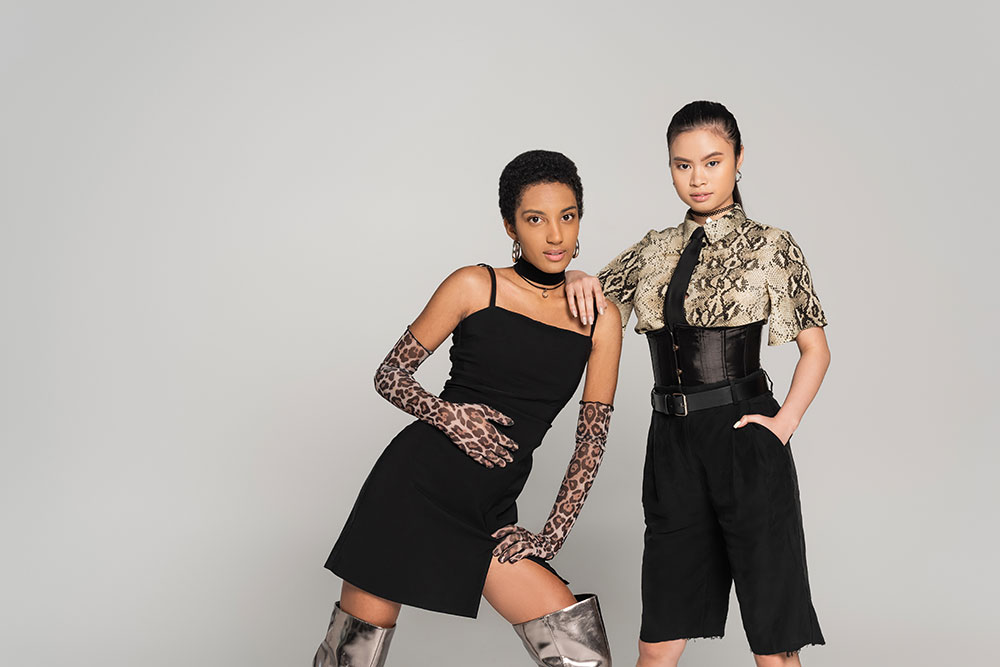
AI
Artificial Intelligence (AI) is transforming the fashion industry by offering tools that help predict trends, generate design ideas, and even personalize clothing for customers. AI algorithms can analyze vast amounts of data, including social media activity, shopping behavior, and search trends, to forecast which styles, colors, and patterns will be popular. This predictive capability allows designers to create collections that are more in tune with current or future consumer demand, reducing the guesswork involved in fashion forecasting. In addition to trend forecasting, AI is helping designers generate ideas for collections by analyzing what’s already popular, generating new combinations of fabrics and colors, and even suggesting unique design concepts. Brands like Stitch Fix use AI to recommend personalized outfits for their customers by analyzing individual preferences, body types, and past purchasing behaviors. For smaller designers, AI is also a powerful tool for understanding customer preferences at a deeper level, allowing them to cater to niche markets by analyzing shopping and social media data. For those interested in technology and fashion, learning the basics of AI can provide a competitive advantage, allowing designers to not only stay ahead of trends but also create personalized designs that appeal to specific consumer needs.
3D Printing
3D printing is revolutionizing the fashion world by enabling designers to create pieces that are impossible or highly difficult to make using traditional methods. This technology works by building objects layer by layer from digital models, allowing for the creation of complex shapes and structures that would be extremely difficult, or even impossible, to achieve through sewing or weaving. For fashion, this means the possibility of printing custom shoes, intricate jewelry, and even entire garments. The technology allows designers to experiment with new materials and structures, leading to innovative designs that push the boundaries of what fashion can be. High-profile designers such as Iris van Herpen have used 3D printing to create garments that are sculptural, futuristic, and sometimes ethereal. Brands like Zellerfeld are pushing the boundaries by printing entire shoes with a mix of flexibility and durability that traditional manufacturing methods can’t match. 3D printing in fashion isn’t just about aesthetics; it also offers sustainability benefits by allowing designers to reduce waste since only the necessary material is used in the printing process. For fashion professionals interested in exploring this innovative technology, there are workshops available in many places where aspiring designers can try their hand at 3D printing and learn how to incorporate it into their own collections.
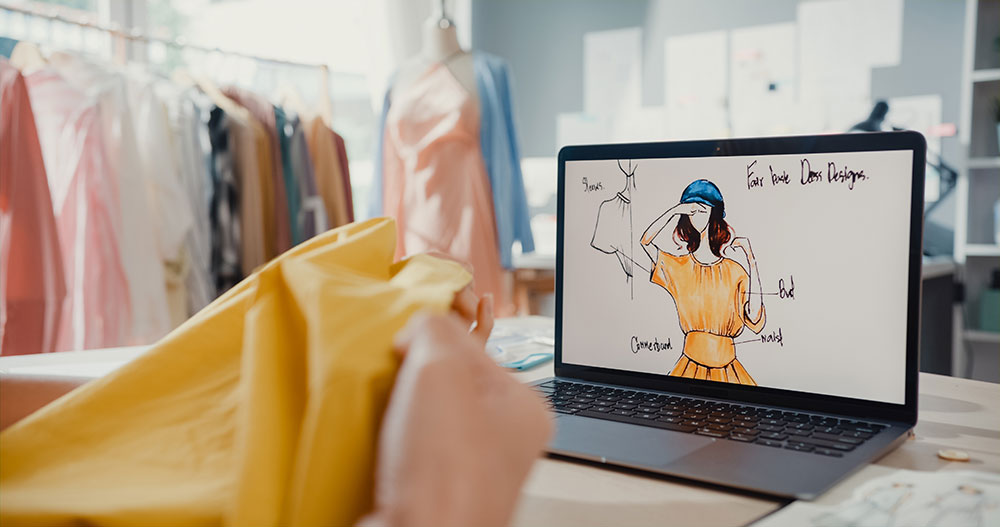
Virtual Fashion
Virtual fashion refers to clothing created digitally for virtual environments, including video games, virtual worlds, and social media platforms. This innovative form of fashion allows designers to craft pieces that exist entirely in the digital space. As the metaverse and virtual reality platforms grow, so does the demand for digital clothing that avatars can wear. Designers like Mishi McDuff, who founded House of Blueberry, create fashion for platforms like Second Life, where users dress their avatars with digital clothing items that they can buy and wear in these virtual spaces. Virtual fashion allows for infinite creativity because designers are not constrained by the limitations of physical materials and manufacturing processes. This freedom has led to the rise of collaborations between physical fashion brands and virtual platforms, with designers creating digital versions of their physical collections for metaverse brand activations or digital fashion shows. Another key figure in this space is Helen Do, a digital fashion creator and 3D artist, who blends her graphic design expertise with fashion to create virtual garments for the metaverse. This space is growing rapidly as virtual environments like the metaverse continue to develop, and the possibilities for designers are virtually limitless. Virtual fashion is also gaining traction due to its potential for sustainability, as digital clothing reduces the need for physical manufacturing, transportation, and resources. As this field expands, it offers exciting opportunities for designers to experiment with new ideas and engage with a global, digital audience.
Using Social Media for Fashion Inspiration and Exposure
It is undeniable that social media platforms like Instagram and TikTok have become hotspots for fashion inspiration. You’ll find everything from GRWM videos and thrift flips to mini vlogs showing the design process. You can get inspired from creators like Wisdom Kaye and Nava Rose who are killing it with their unique style content. Sharing your own work online helps you build a personal brand, get feedback, and connect with other fashion lovers around the world. You can even start uploading on YouTube to show your full design process from sketching and sewing to the final look. Building a strong online presence is honestly one of the best ways to get noticed and grow in today’s fashion scene.
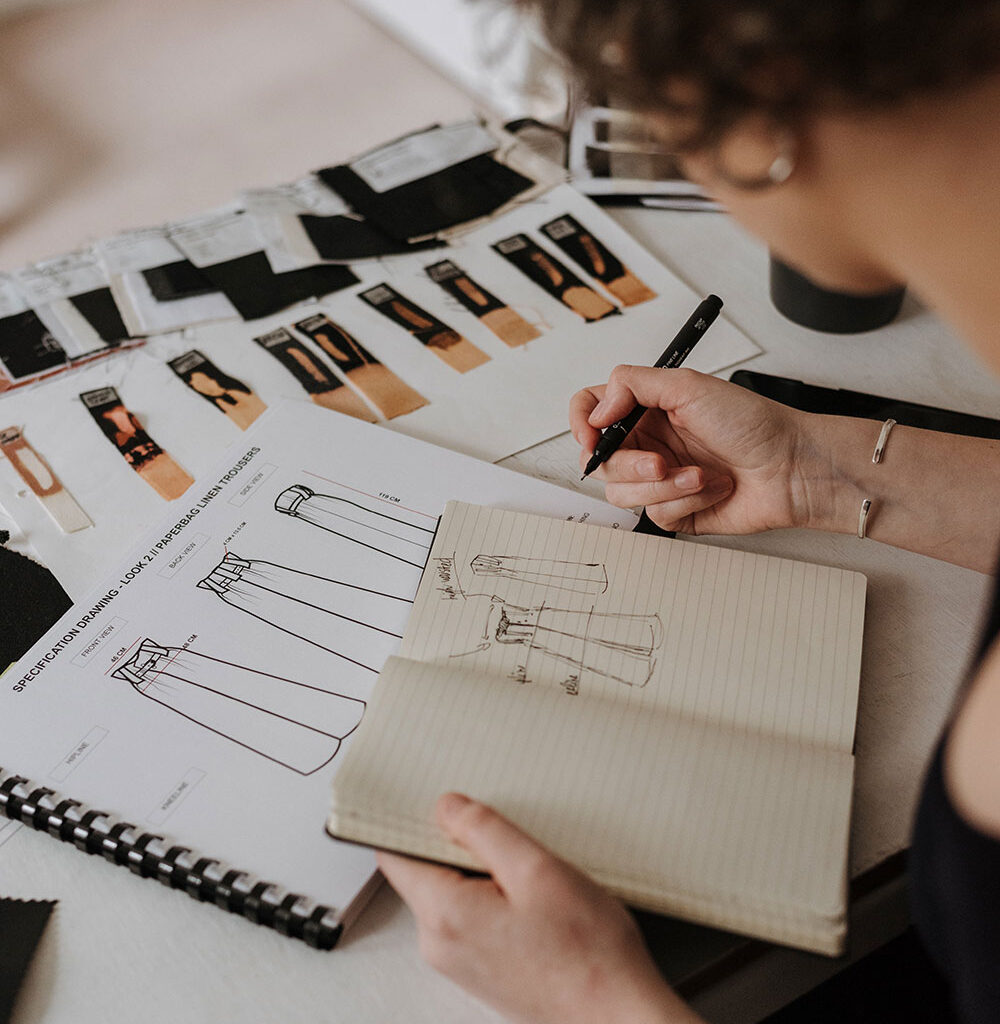
7- Creating Your First Collection
Technology and fashion now go hand in hand which makes it way easier to bring your ideas to life. Digital tools can really help when you’re designing or testing out pieces. In this section, we’ll go over how to plan and develop a mini collection, choose a theme, find fabrics, create samples, and get feedback to make your designs even better.
How to Plan and Develop a Mini Collection
When you’re starting out in fashion design, creating a mini collection of 3 to 5 pieces is a great way to begin. It allows you to keep things manageable, focusing on quality rather than quantity. This size also gives you the opportunity to experiment, refine your designs, and learn more about your target audience. The first step is understanding who you’re designing for; you can think about their age, lifestyle, and aesthetic. Are they into bold, statement pieces or do they prefer minimalistic designs? Knowing your audience will help guide your design process and make your collection more appealing. It’s important to approach the collection with intention; each piece should feel part of a cohesive story. A small, well-curated collection can stand out and make a bigger impact than an overwhelming number of pieces. As you refine your ideas, keep the focus on crafting a strong, unified concept that resonates with your customers.
Choosing a Theme and Concept for Your Designs
The theme and concept of your collection are what give your designs a cohesive identity and make them unique. A theme can come from anywhere; your personal experiences, a cultural reference, a mood, or something as broad as nature or nostalgia. For example, designers today are often inspired by the environment, vintage fashion, or even their emotional state, and this is reflected in their collections. The key to a successful theme is its relatability, meaning your audience should be able to connect with it on some level. To help shape and clarify your theme, creating a mood board can be extremely helpful. This visual tool brings your ideas to life by collecting images, colors, textures, and inspirations in one place, ensuring that your designs stay on track and aligned with your intended vision. A clear theme adds depth to your work and makes your designs stand out as a unified collection.
Sourcing Fabrics and Materials
The fabrics and materials you choose will directly influence the look and feel of your designs. Therefore, sourcing the right materials is crucial to achieving your vision. Start by researching suppliers who offer the types of fabrics that suit your collection’s aesthetic, while also keeping an eye on your budget. Whether you’re looking for luxurious silks, structured cottons, or eco-friendly textiles, the fabric selection will determine how your designs drape, move, and wear. You’ll also want to think about durability, texture, and the sustainability of your fabrics. For example, if you’re committed to creating eco-friendly designs, you might choose fabrics made from organic cotton or recycled materials. If you’re in London, there are a few spots that cater to designers, such as Goldhawk Road or the fabric shops in Soho, where you can find a wide range of fabric options to explore. Once you’ve identified your go-to suppliers, sourcing materials will become a more streamlined part of your process.
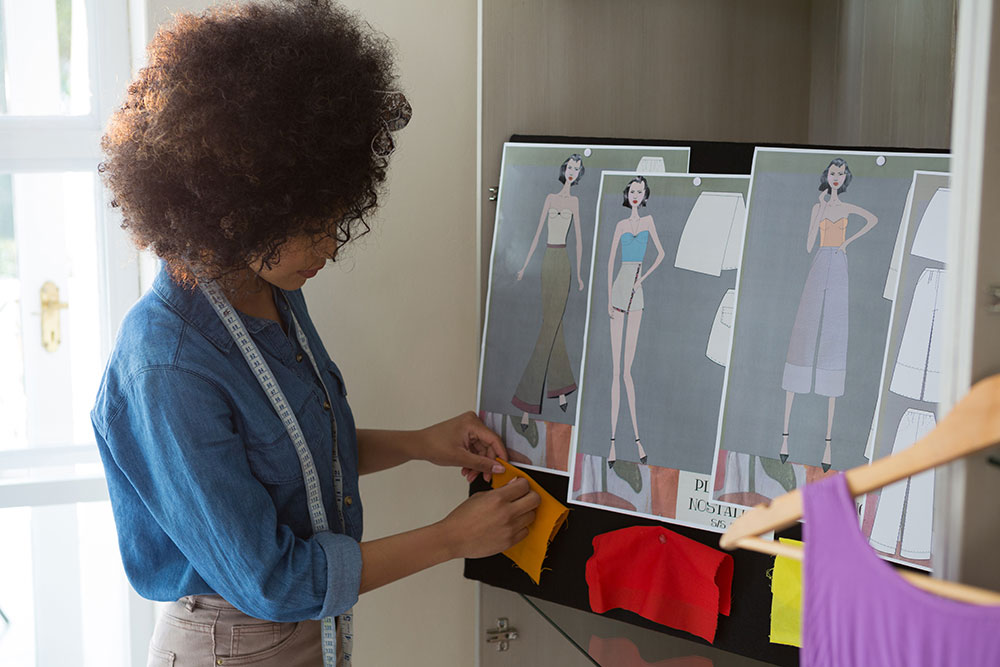
Prototyping and Creating Samples
After finalizing your designs, creating prototypes and samples is a vital step. This is where you bring your sketches to life and test their practicality in terms of fit, functionality, and overall appeal. Collaborating with skilled sample makers or pattern makers is key during this phase, as they will help translate your vision into tangible pieces. It’s important to remember that prototyping involves multiple iterations but don’t expect the first version to be perfect. As you work through these stages, you might discover areas that need improvement, such as tweaking the fit or adjusting certain details. The prototyping phase is also a crucial time to test different construction methods, fabric choices, and finishing techniques. This process helps you refine your designs and avoid issues during mass production. By investing time in prototyping, you ensure that the final products you bring to market are of high quality and match your original design vision.
Getting Feedback and Refining Your Designs
Once your prototypes or samples are ready, it’s time to get feedback from people who can offer valuable insights; whether it’s peers, mentors, or potential customers. Getting honest feedback is essential because it might highlight aspects of your design that you’ve missed, such as a fit issue, a confusing style choice, or even an element that doesn’t translate well in real life. This feedback loop is crucial for refinement and can be the difference between a design that just works and one that resonates with your audience. Use the feedback to make adjustments, improve the design, and enhance its marketability. This is also a great time to start building excitement for your collection, whether by sharing sneak peeks on social media or showing off your prototypes to industry professionals. The goal is to keep refining your designs until you’re confident that they’re ready to be launched. The more feedback you gather and incorporate, the stronger your final collection will be.
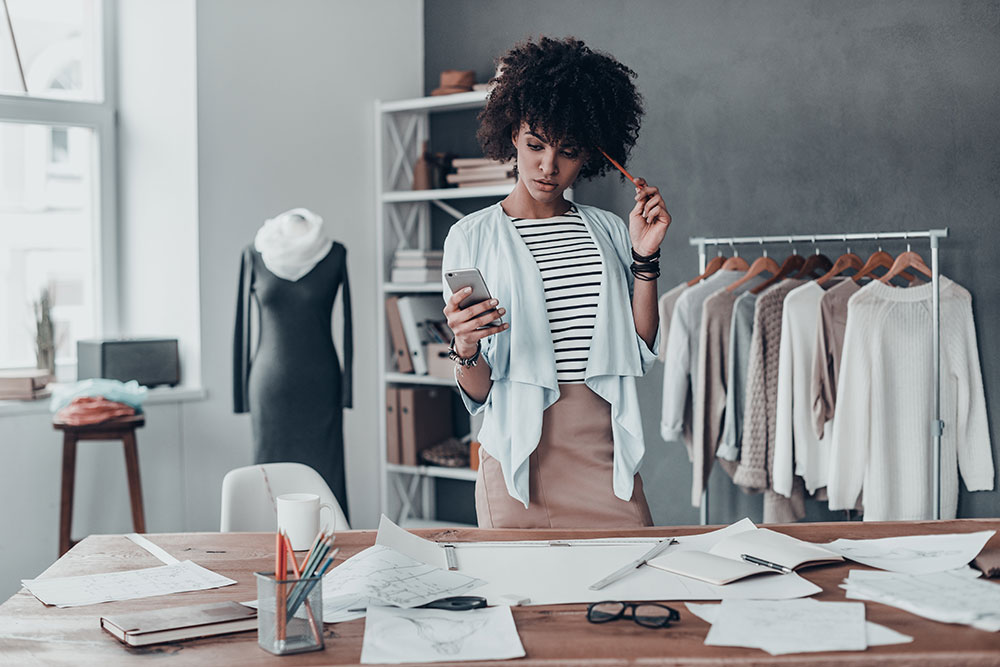
8- Understanding the Business Side of Fashion
In this section, you’ll learn how to navigate the business side of fashion, which is just as important as the creative process. We’ll start by covering how to price your designs and products, ensuring that you set competitive yet profitable prices. You’ll also learn how to create a fashion portfolio that showcases your work in a way that appeals to potential clients or employers. Branding yourself as a fashion designer is another key aspect we’ll dive into, helping you build a strong personal brand that stands out in a crowded industry.
Next, we’ll explore how to start a small fashion business, covering everything from legal requirements to financial planning. Understanding fashion retail and e-commerce will also be a major focus, as these platforms are crucial for getting your designs in front of customers. Finally, we’ll discuss how to work effectively with manufacturers and suppliers, ensuring that your designs are produced to the highest quality and on schedule. This section will give you a comprehensive overview of the practical skills needed to succeed as a fashion designer in today’s business world.
How to Price Your Designs and Products
Pricing your designs and products is a crucial part of launching your brand, and it requires balancing creativity with practicality. Start by calculating all the costs involved in creating your pieces, this includes everything from the materials (fabric, trims, etc.) to the time spent designing, sewing, and assembling. Don’t forget about other costs like overhead (studio space, utilities, marketing) and shipping. Once you’ve got a clear picture of your expenses, you can mark up your products to include a reasonable profit margin.
When pricing, consider your target market and the positioning of your brand. Are you aiming for a luxury clientele or a more accessible price point? Research what similar designers are charging to get a sense of where you fit into the market. You’ll also want to think about the perception your price creates; sometimes a higher price tag can communicate quality and exclusivity, but too high can drive away potential customers. Pricing is an ongoing process, so don’t be afraid to adjust as you gather feedback and learn more about your market. Over time, you’ll find the sweet spot that allows you to sustain your business while making your designs accessible to your target audience.
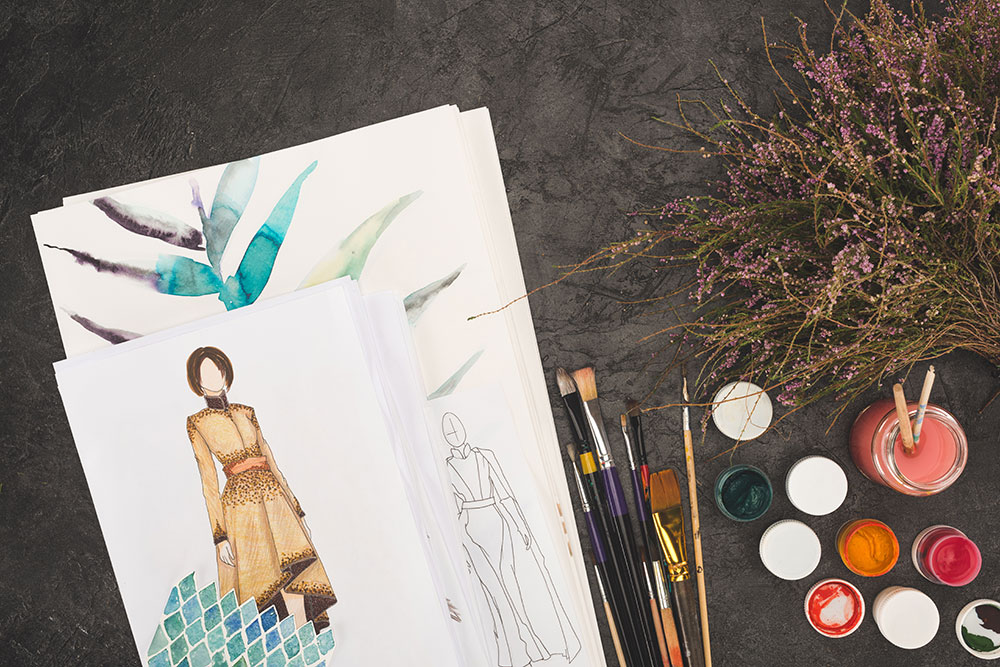
Creating a Fashion Portfolio to Showcase Your Work
Creating a fashion portfolio is an essential part of showcasing your creative journey and talents. It’s more than just a collection of images; it’s a storytelling tool that highlights your skills, vision, and progression as a designer. Your portfolio should include a mix of your best work, such as sketches, final designs, mood boards, and even behind-the-scenes photos from fittings, photoshoots, or the design process. This gives potential collaborators, clients, or schools insight into how you work and the creative process behind each piece.
To make your portfolio stand out, focus on clarity and presentation. Keep it visually consistent and easy to navigate, especially if it’s hosted online. Whether you opt for a simple website, a PDF document, or social platforms like Instagram or Behance, make sure the platform aligns with the vibe you want to convey. Above all, your portfolio should reflect your personality and style as a designer. Make sure to update it regularly with new projects, and don’t be afraid to experiment with layouts or formats to keep it fresh. Having a well-crafted portfolio is a powerful tool that will speak volumes about your ability, style, and professionalism in the fashion industry.
Branding Yourself as a Fashion Designer
Branding yourself as a fashion designer is about creating a distinct identity that resonates with your audience and sets you apart from the competition. It’s not just about your designs; it’s how you convey your story and aesthetic through every touchpoint. From the colors and fonts you choose to the tone you use on social media, consistency is crucial in establishing a recognizable brand. Think about what makes your design philosophy unique and how you want people to feel when they experience your work. Whether it’s luxury, sustainability, or inclusivity, your brand should reflect the values that drive your designs.
Take Harris Reed, for example, whose work blends gender-fluid fashion with bold, dramatic silhouettes and storytelling. His brand embodies a sense of empowerment, romance, and inclusivity, which is communicated through every piece he creates and every platform he uses. This consistency in aesthetic and messaging makes his brand feel unforgettable and unique. A strong personal brand goes beyond just making a logo or picking a catchy name but it’s also about cultivating an emotional connection with your audience. When your brand is authentic and consistent, it builds loyalty and makes people more likely to buy into your vision, not just your clothes.
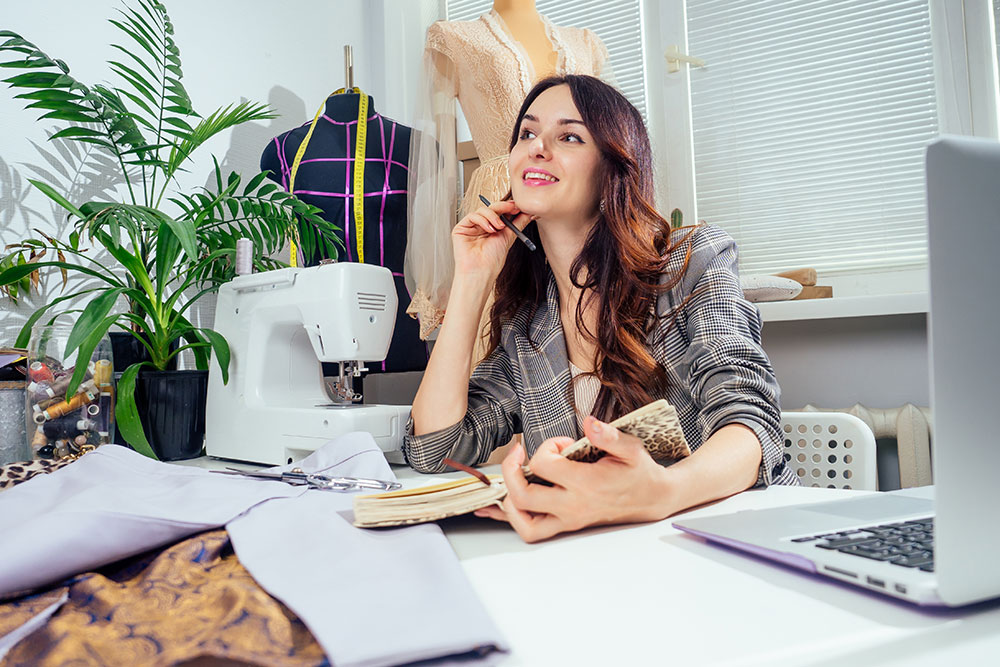
How to Start a Small Fashion Business
Starting a small fashion business might seem overwhelming at first, but breaking it down into manageable steps makes it more achievable. Begin by choosing a business name that reflects your brand’s identity and resonates with your target audience. Next, set a realistic budget that includes costs for production, marketing, and any other essentials like packaging and shipping. It’s also important to decide where you’ll sell your products, whether it’s through an online store, pop-up events, or local boutiques. This will help you plan your marketing strategy and decide which platforms are best for reaching your audience.
Once you have your basics in place, it’s time to think about the legal side of things. Registering your business and ensuring that you understand the necessary taxes and licenses is essential for long-term success. Starting small allows you to test your designs and business approach without the pressure of large-scale production. Many successful indie brands began from humble beginnings; whether in a bedroom or kitchen table; so don’t feel the need to go big right away. Instead, focus on perfecting your designs and creating a loyal customer base, then gradually scale as your business grows
Understanding Fashion Retail and E-commerce
Fashion today is sold both in stores and online and both ways are super important. While retail gives that hands-on shopping experience, e-commerce brings fashion to your fingertips, anytime and anywhere. Understanding Fashion Retail and E-commerce is crucial for anyone looking to enter the fashion industry today, as both channels play an important role in how fashion is sold and experienced. While retail offers a tactile, in-person shopping experience, e-commerce has revolutionized the way consumers shop by providing convenience and accessibility at any time and from anywhere. Both platforms serve different needs and offer unique advantages for both customers and designers.
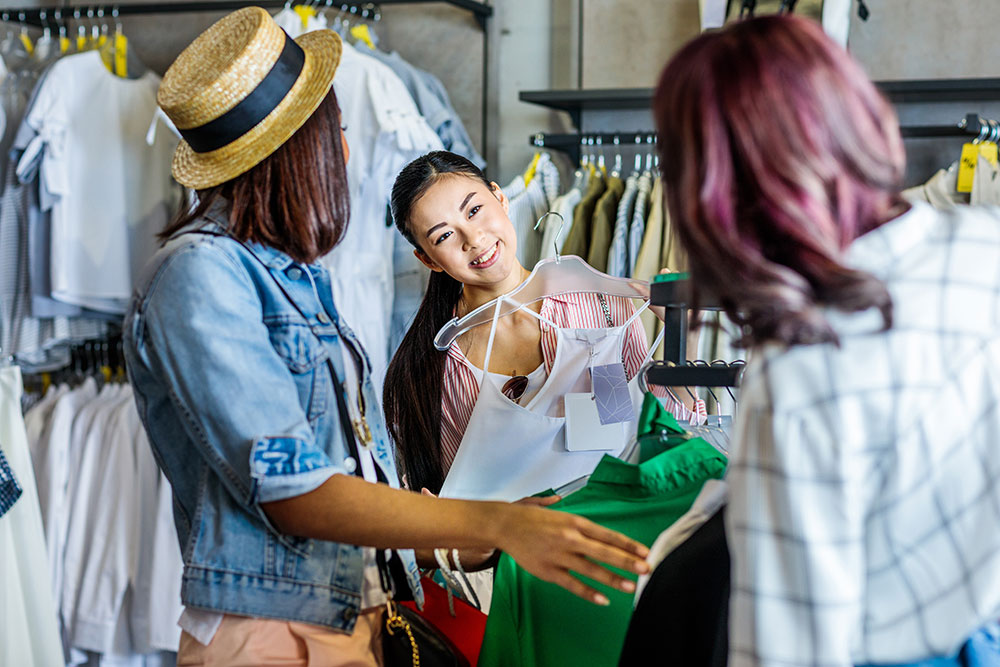
Fashion Retail
Fashion Retail refers to the traditional method of selling fashion through physical stores such as boutiques, department stores, and high-street shops. These spaces offer customers the ability to touch and feel the fabric, try on garments, and observe the quality and craftsmanship of the pieces in person. Retail spaces provide brands with a unique opportunity to craft an environment that mirrors their identity, often through carefully curated displays, store layouts, and in-store styling that draws customers in and enhances the shopping experience. Employees in retail roles take on various responsibilities, from managing inventory and assisting customers to creating an atmosphere that keeps people coming back.
Even with the rapid growth of e-commerce, retail continues to hold significant value, especially for customers who enjoy the sensory experience of shopping in person. The personal connection made through face-to-face interactions allows brands to foster strong relationships with their customers, which can lead to loyalty and long-term support. For many shoppers, the in-store experience remains integral to their purchasing decisions, providing a level of service, immediacy, and personal touch that cannot be replicated online.
E-commerce
E-commerce has become the modern-day digital storefront for fashion, allowing brands to showcase and sell their collections through websites or mobile apps. This channel eliminates the need for a physical location, enabling designers to reach a global audience with ease. The convenience of shopping online, anytime and from anywhere, has made e-commerce a dominant force in the fashion industry. Retailers like ASOS offer a wide range of brands, making it easier for consumers to find exactly what they’re looking for. Features such as high-quality product images, customer reviews, and virtual try-on tools give shoppers confidence in their purchasing decisions, even without trying the items on in person.
Social media plays a critical role in driving traffic to e-commerce sites by allowing brands to engage with their audience directly. Platforms like Instagram and TikTok are crucial for promoting collections, driving awareness, and even facilitating sales. E-commerce offers brands the flexibility to operate 24/7, making it faster and more adaptable to changing consumer demands. As digital shopping continues to grow, e-commerce is becoming an essential component of the fashion retail landscape, enabling brands to expand their reach and cater to the ever-evolving preferences of the modern shopper.
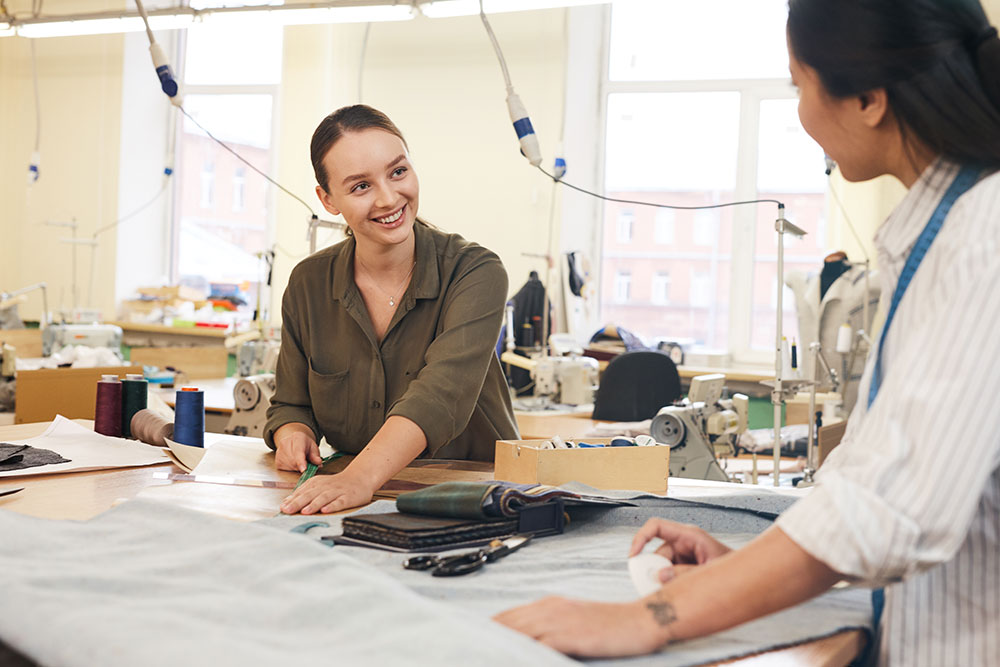
Working with Manufacturers and Suppliers
It is important to build good relationships with both manufacturers and suppliers to bring your designs to life. They play a big role in making sure your pieces look great and get made on time. Manufacturers are responsible for bringing your garments to life, while suppliers provide the materials needed to create them. Building strong, professional relationships with both is essential for ensuring quality, consistency, and timely delivery. The better you communicate your vision and expectations, the smoother the production process will be. If you’re focused on sustainability, it’s even more important to choose manufacturers and suppliers who align with your eco-friendly values. With the right team behind you, you can confidently take your designs from concept to finished product, knowing they’ll turn out exactly as you’ve envisioned.
Manufacturers
Manufacturers play a key role in turning your designs into actual products, so building a solid relationship with them is essential. When choosing a manufacturer, look for someone who not only has the technical skills but also aligns with your values; whether that’s sustainability, ethical production, or attention to detail. Communication is everything here. You want someone who’s responsive, transparent, and open to feedback, especially during the sampling phase. Clear timelines, pricing, and expectations from the start can save you a lot of stress later.
If you’re just starting out, finding a manufacturer that accepts small batch or made-to-order production can be a game changer. It lets you test the market without overproducing or spending too much upfront. Always request samples before you move forward with a full run; this helps you check the fit, stitching, and fabric quality before it hits your audience. If possible, try to visit the facility or set up a virtual tour to get a sense of how they work. Trust and consistency are key to long-term success.
Suppliers
Suppliers are a vital part of the design process because they’re the ones providing all the raw materials from fabrics to buttons, zippers, and trims. Finding the right supplier means your designs will come to life just the way you envisioned, with the quality and feel you want. It’s worth taking the time to research and test different options before settling. Look for suppliers who are clear about their sourcing practices, delivery timelines, and pricing. If sustainability is part of your brand, try to work with suppliers who offer eco-friendly or ethically sourced materials, and don’t be afraid to ask questions about where things come from.
Building strong relationships with your suppliers can seriously improve your workflow. Good suppliers will give you heads-up on new materials, offer swatches or samples, and sometimes even give you better prices if you work with them long-term. Visiting fabric markets or attending trade shows is a great way to explore what’s out there and make real connections. Even when ordering online, some suppliers let you order sample packs, which helps when testing out textures, weights, and colors. In the end, reliable suppliers can save you time, reduce production stress, and help you bring your creative ideas to life smoothly.
Continue Reading
- How to Get Started in Fashion Design- A Beginner’s Guide / Part 1
- How to Get Started in Fashion Design- A Beginner’s Guide / Part 2
- How to Get Started in Fashion Design- A Beginner’s Guide / Part 3
- How to Get Started in Fashion Design- A Beginner’s Guide / Part 4
Written By: Muskaan Khojestagan
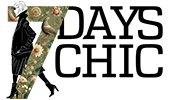
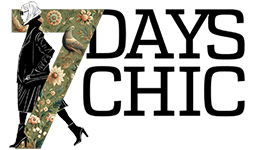
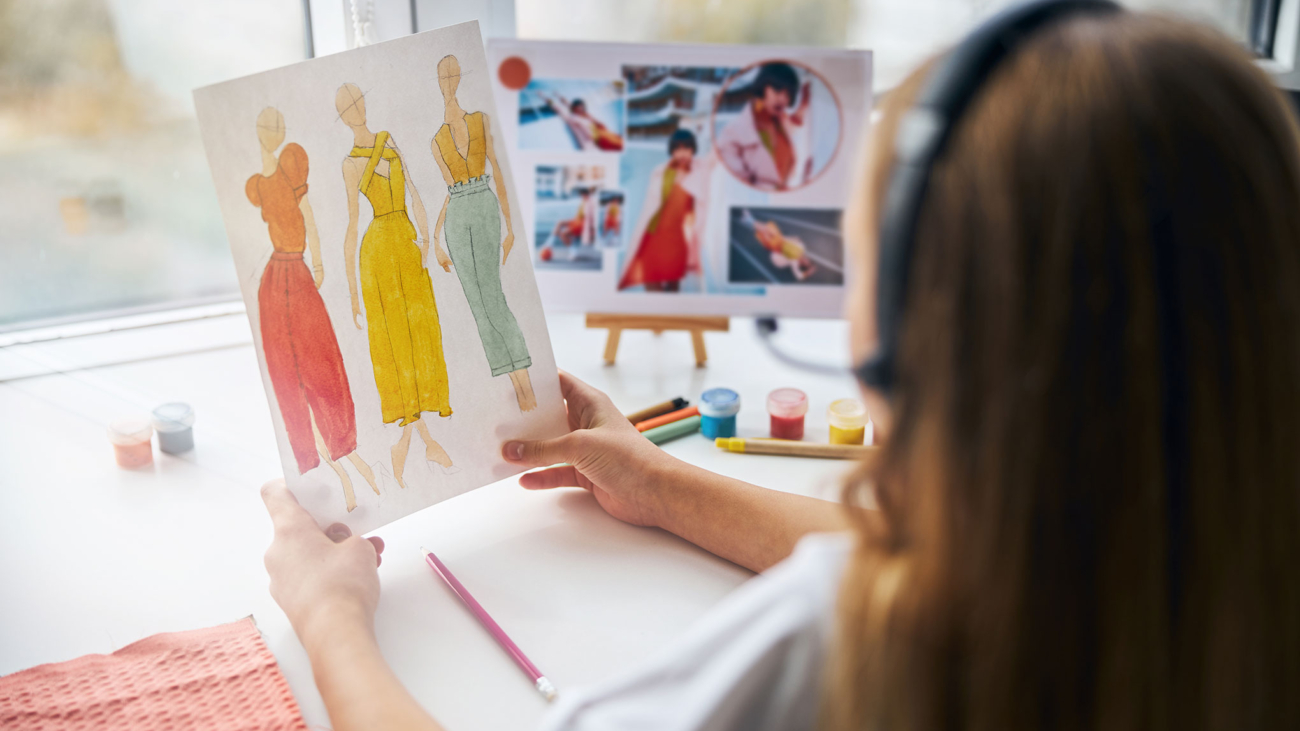
Add a Comment